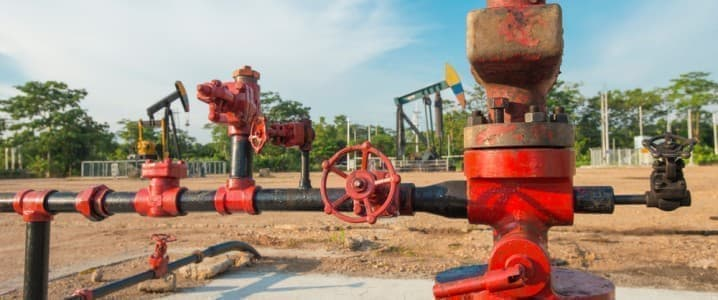The strife-torn Latin American nation of Colombia is facing considerable uncertainty after the first leftist president in the country’s modern history Gustavo Petro embarked upon a plan to end contracting for hydrocarbon exploration.
Industry tax hikes have already ratcheted-up the level of fear and there are significant concerns Petro’s plan will not only shock Colombia’s petroleum-dependent economy but endanger the Andean country’s energy security and even spark a crisis. It is an ever-growing shortage of natural gas which will be the most likely trigger of an energy crisis, with declining domestic supply and rising demand already having forced Colombia to significantly increase liquified petroleum gas imports. The risks of such a crisis emerging are very real if Petro proceeds with his plan to cease issuing new oil exploration contracts.
For roughly a decade, Colombia’s national government in the capital Bogota has been grappling with growing natural gas supply constraints at a time when demand for the fuel is rising rapidly. The dwindling natural gas supply can be primarily blamed on inadequate proven reserves, a lack of exploration and aging mature gas fields with rising decline rates. By the end of 2021, according to Colombia’s energy ministry, the country had only 3.1 trillion cubic feet of proven natural gas reserves, which at the current rate of production of around 1.1 million cubic feet daily, is only sufficient for another eight years. This points to current reserves being incapable of meeting domestic demand for natural gas in the near future. It is for this reason that Bogota started bulk imports of liquified petroleum gas in late-2017.
The Santos and Duque administrations introduced policies aimed at garnering greater energy investment from foreign energy companies and stimulating hydrocarbon exploration. Those measures included introducing a well-head price for natural gas that was substantially higher than the international market rate and providing tax incentives for natural gas development. By 2021 demand for fossil fuel had grown so significantly that Colombia was planning to quadruple LPG imports during 2022. Even that has proven incapable of resolving Colombia’s natural gas supply crunch.
A pressing issue is that replacing Colombia’s aging gas fields and boosting the country’s meager reserves is proving highly problematic. There have been no major world-class hydrocarbon discoveries in Colombia for almost three decades, and despite 100 years of exploration, only four giant oil and gas fields have been discovered during that period. This indicates that Colombia does not possess the hydrocarbon potential that previous governments, the regulatory authority, the National Hydrocarbon Agency (ANH – Spanish initials) and the peak industry body, the Colombian Petroleum Association (ACP – Spanish initials) believe.
Another complication is that much of the natural gas discovered and produced in Colombia is associated with gas which is contained in oil reservoirs and is a byproduct of petroleum extraction. Drillers in Colombia are utilizing nearly all the natural gas they produce for use in enhanced recovery techniques, notably gas injection. This is where the natural gas is injected into wells to elevate the reservoir pressure making it easier to extract the petroleum, thereby increasing the commercial life of the well. A lack of major oil discoveries and the fact that most producing oilfields are mature with aging wells means that there is a growing necessity to use gas injection to optimize petroleum extraction.
Demand for dry gas is also high because petroleum industry participants use it as a fuel for the gas-fired plants which power their operations. This even includes national oil company Ecopetrol’s Cartagena and Barrancabermeja refineries. Gas condensate is also a crucial element used in Colombia’s petroleum production. It is employed as a necessary diluent that is added to the heavy crude oil, which comprises most of the petroleum produced in the Andean country, to make the bitumen-like oil flow so that it can be easily transported and process.
There is also surging demand for natural gas from Colombian households and industry where it has become a key low-cost fuel used for a variety of purposes from heating and cooking to manufacturing applications. Gas-fired electricity generation is also becoming progressively more important in Colombia. A sharp decline in water levels due to an extended drought and the El Niño weather phenomena during 2015 and 2016 caused electricity output from Colombia’s hydroelectric plants to decline sharply. That placed considerable pressure on a national electric grid that was already plagued by inadequate infrastructure, faults and frequent outages. To ensure that adequate electricity is produced, Bogota implemented a strategy aimed at building gas-fired plants to provide additional electricity production during times hydroelectric output low. That placed greater pressure on already constrained natural gas supplies.
Analysts fear if Petro proceeds with ending hydrocarbon exploration, then Colombia’s already meagre oil and natural gas reserves will rapidly dissipate, meaning the country will no longer be energy self-sufficient and face a potential crisis by as early as 2024. To assuage those fears Colombia’s president announced toward the end of 2022 that he had secure a deal through a privately held company for Venezuela’s national oil company PDVSA to export natural gas to Colombia. While aspects of the plan make sense, particularly with Venezuela possessing the world’s largest petroleum reserves, it is fraught with considerable risk and may not be a viable solution. Petro’s plan to cease awarding hydrocarbon exploration contracts will exacerbate Colombia’s existing natural gas shortage, potentially roil the oil dependent economy and trigger an energy crisis.



